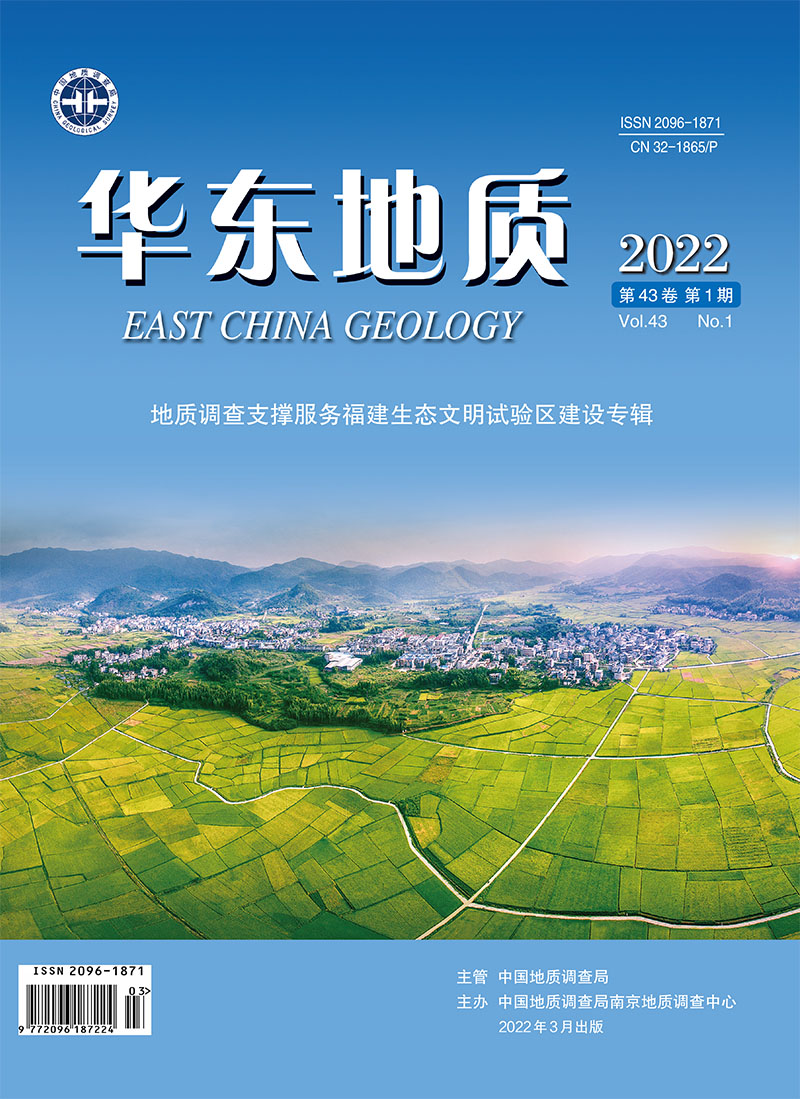|
[1]
|
高杨. 晋江西溪流域环境变化的水文响应研究[D]. 福州:福建师范大学,2009.
Google Scholar
GAO Y. Hydrological response to environmental change in xixi watershed of Jinjiang river[D]. Fuzhou:Fujian Normal University,2009.
Google Scholar
|
|
[2]
|
陆海燕.新疆生态脆弱性评价研究[D].乌鲁木齐:新疆农业大学,2020.
Google Scholar
LU H Y. Study on ecological vulnerability assessment in xinjiang[D]. Urumqi:Xinjiang Agricultural University,2020.
Google Scholar
|
|
[3]
|
任源鑫, 林青, 韩婷,等. 陕西省水资源脆弱性评价[J]. 水土保持研究, 2020, 27(2):231-236.
Google Scholar
REN Y X,LIN Q,HAN T, et al. Evaluation on the vulnerability of water resources in Shaanxi Pro-vince[J]. Research of Soil and Water Conservation, 2020, 27(2):231-236.
Google Scholar
|
|
[4]
|
王贝贝,丁明军,管琪卉,等.基于格网的南昌市生态环境脆弱性评价[J].生态学报,2019(15):5460-5472.
Google Scholar
WANG B B,DING M J, GUAN Q H, et al. Gridded assessment of eco-environmental vulnerability in Nanchang City[J].Acta Ecologica Sinica, 2019(15):5460-5472.
Google Scholar
|
|
[5]
|
张慧琳, 吴攀升, 侯艳军. 五台山地区生态脆弱性评价及其时空变化[J]. 生态与农村环境学报, 2020,3(8):1026-1035.
Google Scholar
ZHANG H L,WU P S,HOU Y J. Ecological vulnerability assessment and its temporal and spatial changes in Wutai mountain area[J]. Journal of Ecology and Rural Environment, 2020,3(8):1026-1035.
Google Scholar
|
|
[6]
|
周玲美,王世航,权玲. 基于遥感和地理信息系统的内蒙古呼日查干淖尔地区生态脆弱性评价[J]. 生态与农村环境学报,2021,37(4):484-491.
Google Scholar
ZHOU L M,WANG S H,QUAN L. Ecological vulnerability assessment in huri chagannoor of Inner Mongolia based on rs and gis technology[J]. Journal of Ecology and Rural Environment,2021,37(4):484-491.
Google Scholar
|
|
[7]
|
POLSKY C, NEFF R, YARNAL B. Building comparable global change vulnerability assessments:The vulnerability scoping diagram[J]. Global Environ-mental Change, 2007, 17(3-4):472-485.
Google Scholar
|
|
[8]
|
黄炎, 陈国光, 李雪平. 武夷山茶叶品质与土壤地球化学背景特征关系探讨[J]. 华东地质, 2020,41(2):166-176.
Google Scholar
HUANG Y, CHEN G G,LI X P. Discussion on the relationship between Wuyishan tea quality and geochemistry background characteristics[J]. East China Geology, 2020,41(2):166-176.
Google Scholar
|
|
[9]
|
李平星,樊杰. 基于VSD模型的区域生态系统脆弱性评价——以广西西江经济带为例[J]. 自然资源学报, 2014,5(29):49-58.
Google Scholar
LI P X,FAN J. Regional ecological vulnerability assessment based on vsd model:a case study of Xijiang river economic belt in Guangxi[J]. Journal of Natural Resources, 2014, 5(29):49-58.
Google Scholar
|
|
[10]
|
尚嘉宁,邵怀勇,李峰,等.金沙江流域生态脆弱性评价[J].湖北农业科学,2021,60(8):50-54.
Google Scholar
SHANG J N,SHAO H Y,LI F,et al. Assessment of ecological vulnerability in Jinsha river basin[J].Hubei Agricultural Sciences,2021,60(8):50-54.
Google Scholar
|
|
[11]
|
贾晶晶, 赵军, 王建邦,等. 基于SRP模型的石羊河流域生态脆弱性评价[J]. 干旱区资源与环境, 2020, 34(1):36-43.
Google Scholar
JIA J J,ZHAO J,WANG J B, et al. Ecological vulnerability assessment of Shiyang river basin based on SRP model[J]. Journal of Arid Land Resources and Environment, 2020, 34(1):36-43.
Google Scholar
|
|
[12]
|
泉州市水利局. 2018福建省水资源公报[EB/OL]. (2019-07-30)[2021-08-09].http://slj.quanzhou.gov.cn/zwgk/ghjh/201908/t20190822_1947845.htm. Quanzhou Water Resources Bureau. 2018 Fujian Water Resources Bulletin[EB/OL]. (2019-07-30)[2021-08-09]. http://slj.quanzhou.gov.cn/zwgk/ghjh/201908/t20190822_1947845.htm.
Google Scholar
|
|
[13]
|
NASA. New Version of the ASTER GDEM[EB/OL].[EB/OL]. (2020-03-03)[2021-08-09].https://earthdata.nasa.gov/learn/articles/new-aster-gdem.
Google Scholar
|
|
[14]
|
中国科学院南京土壤研究所. 中国土壤科学数据库[EB/OL]. (2019-03-17)[2021-08-09].http://vdb3.soil.csdb.cn/. Institute of Soil Science,Chinese Academy of Sciences. China Soil Science Database[EB/OL]. (2019-03-17)[2021-08-09]. http://vdb3.soil.csdb.cn/.
Google Scholar
|
|
[15]
|
戴永久, 上官微. 中国土壤有机质数据集[EB/OL]. (2018-07-23)[2021-08-09].https://geodata.pku.edu.cn/index.php?c=content&a=show&id=416.
Google Scholar
DAI Y J, SHANGGUAN W. Chinese soil organic matter data set[EB/OL]. (2018-07-23)[2021-08-09].https://geodata.pku.edu.cn/index.php?c=content&a=show&id=416.
Google Scholar
|
|
[16]
|
北京大学城市与环境学院. 北京大学城市与环境学院地理数据平台[EB/OL] (2018-07-23)[2021-08-09].http://geodata.pku.edu.cn.
Google Scholar
College of Urban and Environmental Sciences. Geographic data platform, School of city and environment, Peking University[EB/OL]. (2018-07-23)[2021-08-09].http://geodata.pku.edu.cn.
Google Scholar
|
|
[17]
|
李勇, 唐澈, 赵华,等. 茶树耐铝聚铝特性及其机理研究进展[J]. 茶叶科学, 2018, 38(1):1-8.
Google Scholar
LI Y,TANG C,ZHAO H,et al. Advances of aluminum tolerance and accumulation in tea plant[J]. Journal of Tea Science, 2018, 38(1):1-8.
Google Scholar
|
|
[18]
|
ANSELIN L. Local Indicators of Spatial Association-LISA[J]. Geographical Analysis, 2010, 27(2):93-115.
Google Scholar
|
|
[19]
|
骆嘉伟, 李仁发, 张白妮. 基于多维伪F统计量的基因表达动态聚类分析方法研究[J]. 系统仿真学报, 2006(3):586-589.
Google Scholar
LUO J W,LI R F,ZHANG B N. Study on dynamic clustering analysis method for gene expression data based on multidimension pseudo f-statistics[J]. Journal of System Simulation, 2006(3):586-589.
Google Scholar
|
|
[20]
|
刘文博, 梁盛楠, 余泉,等. 基于伪F统计量的属性特征降维方法研究[J]. 东北师大学报:自然科学版, 2020(1):43-49.
Google Scholar
LIU W B,LIANG S N,YU Q,et al. Attribute feature dimensionality reduction method based on pseudo f statistic[J]. Journal of Northeast Normal University:Natural Science Edition, 2020(1):43-49.
Google Scholar
|
|
[21]
|
CALINSKI T, HARABASZ J. A dendrite method for cluster analysis[J]. Communications in Statistics,1974,3(1):1-27.
Google Scholar
|
|
[22]
|
文锡梅, 陆洋, 兰安军,等. 无公害茶园地的空间分析及土地适宜性综合评价——以贵定县为例[J]. 中国农学通报, 2012,28(2):265-272.
Google Scholar
WEN X M,LU Y,LAN A J,et al. Space analysis and land suitability comprehensive evaluation of pollution-free tea plantation-Acase study of guiding county, guizhou province[J]. Chinese Agricultural Science Bulletin, 2012,28(2):265-272.
Google Scholar
|
|
[23]
|
杨高, 李颖, 付波霖,等. 基于遥感的河岸带生态修复效应定量评估——以辽河干流为例.[J]. 水利学报, 2018, 49(5):608-618.
Google Scholar
YANG G,LI Y,FU B L,et al. Quantitative evaluation of riparian ecological restoration in Liao river based on remote sensing.[J]. Journal Of Hydraulic Engi-neering, 2018, 49(5):608-618.
Google Scholar
|






 DownLoad:
DownLoad: